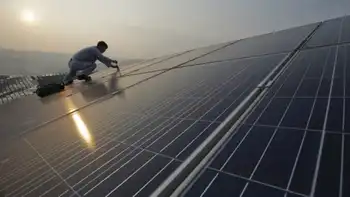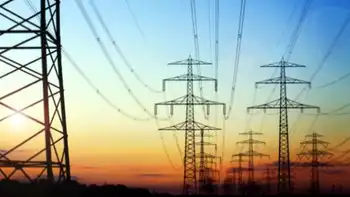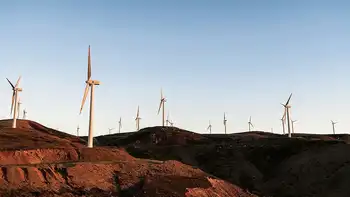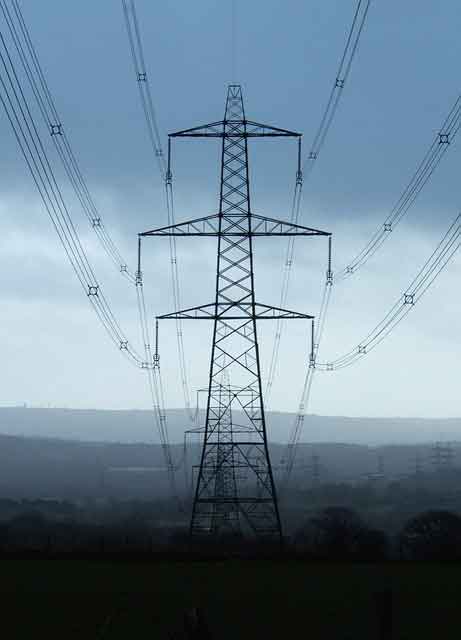Three New Solar Electricity Facilities in Alberta Contracted At Lower Cost than Natural Gas

Arc Flash Training CSA Z462 - Electrical Safety Essentials
Our customized live online or in‑person group training can be delivered to your staff at your location.

- Live Online
- 6 hours Instructor-led
- Group Training Available
Alberta Solar Energy Contracts secure low-cost photovoltaic PPAs for government operations, delivering renewable electricity at 4.8 cents/kWh, beating natural gas LCOE, enhancing summer grid efficiency across Hays, Tilley, and Jenner with Canadian Solar.
Key Points
Low-cost PV power agreements meeting 55% of Alberta government electricity demand via new Canadian Solar facilities.
✅ Price: 4.8 cents/kWh CAD, under gas-fired generation LCOE.
✅ Sites: Hays, Tilley, Jenner; 50% equity with Conklin Métis Local #193.
✅ Supplies 55% of provincial government electricity demand.
Three new solar electricity facilities to be built in south eastern Alberta (Canada) amid Alberta's solar growth have been selected through a competitive process to supply the Government of Alberta with 55 per cent of their annual electricity needs. The facilities will be built near Hays, Tilley, and Jenner, by Canadian Solar with Conklin Métis Local #193 as 50-percent equity owners.
The Government of Alberta's operations have been powered 100 per cent with wind power since 2007. Upon the expiration of some of these contracts, they have been renewed to switch from wind to solar energy. The average contract pricing will be $0.048 per kilowatt hour (3.6 cents/kWh USD), which is less than the average historical wholesale power pool price paid to natural gas-fired electricity in the province in years 2008 - 2018.
"The conversation about solar energy has long been fixated on its price competitiveness with fossil fuels," said John Gorman, CanSIA President & CEO. "Today's announcement demonstrates that low cost solar energy has arrived as a mainstream option in Alberta, even as demand for solar lags in Canada according to federal assessments. The conversation should next focus on how to optimize an all-of-the-above strategy for developing the province's renewable and non-renewable resources."
"This price discovery is monumental for the solar industry in Canada" said Patrick Bateman, CanSIA Director of Policy & Market Development. "At less than five cents per kilowatt hour, this solar electricity has a cost that is less than that of natural gas. Achieving Alberta's legislated 30 per cent by 2030 renewable electricity target just became a whole lot cheaper!".
Quick Facts:
- The contract price of 4.8 cents/kWh CAD to be paid by Alberta Infrastructure for this solar electricity represents a lower Levelized Cost of Electricity (LCOE) than the average annual wholesale price paid by the power pool to combined-cycle and single-cycle natural gas-fired electricity generation which was 7.1 cents/kWh and 11.2 cents/kWh respectively from 2008 - 2018.
- Alberta receives more hours of sunshine than Miami, Florida in the summer months. Alberta's electricity supply is most strained in summer, highlighting challenges for solar expansion when high temperatures increase the resistance of the distribution and transmission systems, and reduce the efficiency of cooling thermal power plants. For this reason, solar facilities sited near to electricity demand improves overall grid efficiency. Supply shortages are atypical in Alberta in winter when solar energy is least available. When they do occur, imports are increased and large loads are decreased.
- In 2018, Alberta's solar electricity generation exceeded 50 MW. While representing much less than 1% of the province's electricity supply today, the Canadian Solar Industries Association (CanSIA) forecasts that solar energy could supply as much as 3 per cent of the province's electricity by 2030, supporting renewable energy job growth across Alberta. A recent supply chain study of the solar electricity sector in Alberta by Solas Energy Consulting Inc. found a potential of $4.1 billion in market value and a labour force rising to 10,000 in 2030.
To learn more about solar energy and the best way for consumers to go solar, please visit the Canadian Solar Industries Association at www.CanSIA.ca.











